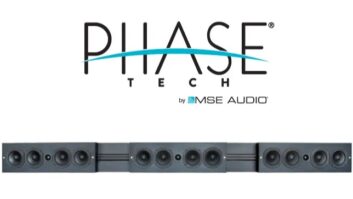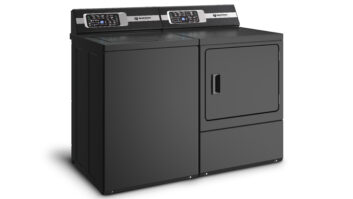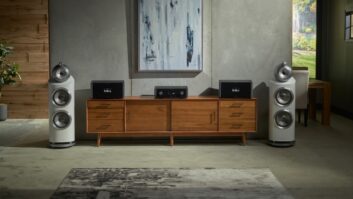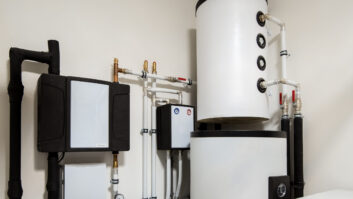DENVER — The custom-installation channel is on the mend judging by CEDIA Expo attendance, exhibitor feedback, installer sentiment, and the number of multi-room-A/V, home-control and component-audio introductions at the show.
Expo attendance rose 5.9 percent to 17,900 following a 4 percent dip in 2012, and the number of exhibitors grew to more than 470, from more than 450 in 2012, CEDIA reported. In addition, preliminary findings from a CEDIA survey found that systems integrators expect their gross revenues to rise by 16 percent in 2013 to an average $1.47 million following a 2012 dip of 4 percent to $1.27 million.
Exhibitors polled at the show expressed satisfaction with the turnout, and they noted a growing sense of optimism among systems integrators. In one indicator of the channel’s growth, two suppliers — Bang & Olufsen and Sony — talked up new programs targeted to the custom channel.
In multi-room A/V, the first HDMI matrix switchers with the ability to switch 4K Ultra High-Definition signals made their presence known at the CEDIA Expo from such companies as Wyrestorm, Zigen and DVDO, and Crestron showed its first 4K-capable HDBaseT extenders. Switchers and extenders with HDMI 2.0 support, however, won’t be available until chips for those technologies become available in mid-2014, Crestron said. Those HDMI ports will pass through copy-protected 4K content using the HDCP 2.2 standard.
Wireless multiroom audio technologies also put in a strong appearance, with products unveiled by Russound, new Lenbrook brand Bluesound, Nortek subsidiary Core Brands, KEF and Monitor Audio. For its part, Rockustics unveiled wireless outdoor rock speakers.
In home audio, Klipsch, Energy and LG introduced their first TV-speaker bases, while SpeakerCraft and AudioXperts expanded their speaker-base selections. Meantime, Jamo, Leon and Monitor Audio introduced their first active soundbars; Yamaha and Paradigm expanded their active-soundbar selections; Sonance unveiled its first passive three-channel soundbars; and Phase Technology expanded its three-channel passive selection.
In home automation, suppliers unveiled more products that link their systems to other home systems, enabling control of multiple home systems from the same in-wall keypad or touchscreen. Yale and Baldwin, for example, added Crestron’s wireless protocol to select doorlocks to enable integration with Crestron home-control systems.
In video, a significantly reduced number of exhibitors and introductions turned up compared to the past, following a trend that began several years earlier. Among the handful of video companies exhibiting, the emphasis was once again on front-projection systems offering 4K resolution as well as improved 2D/3D 1080p models with either higher brightness levels or deeper contrast and color performance to fit different room characteristics.
Here’s what a variety of audio and home-automation companies unveiled at the show:
AudioAccess, the division of Amplifier Technologies, showed its PX-800, a 16-source, 16-zone audio router. The new $2,195-suggested model, which is available, adds multiple integration capabilities for control by third-party control systems, including Crestron control systems. The PX-800 connects to Audioaccess KPS-101 legacy keypads already installed in homes via a new protocol converter.
AudioXperts expanded its selection with a designer- inspired on-wall speaker, its fourth thin Korners lifestyle speaker, and its third low-profile TV-speaker base.
The company recently began shipping the first three speakers in its Korners series of lifestyle-oriented thin, wedge-shaped speakers. They are a $999- each tower, $999 center channel and a $1,249 wireless subwoofer.
The fourth Korners model, the $499 Korners On Wall, was unveiled and will be the smallest in the series at 3 feet in height when it ships at the end of November. It’s designed only for on-wall mounting, including in corners, and can be placed horizontally or vertically. The $999 tower, in contrast, is a floor-standing model that can be placed anywhere along a wall or in a corner, and a $999 model designed mainly as a horizontal center channel can be wall- or stand-mounted.
The latest TV-speaker base, also part of the 4TV series, is the $999-suggested AC121, which ships at the end of November and joins the larger 4TV 2112, now at $1,499, and the $3,999 4TV 5122, which was recalled to fix performance issues.
The new 2.1-channel model measures 2.25 by 32 by 15 inches and features a swiveling, smoked-glass- and-aluminum enclosure like its counterparts. The system accommodates most flat-panel TVs up to 60 pounds and features a built-in subwoofer. Video source switching is left to the TV.
A new on-wall speaker outside of the Korners series is the VIEWS (Visually IntEgrated Wall Speaker) V24 for commercial and residential applications, particularly in MDUs to avoid cutting holes in walls. The $249-each speaker is a small two-way speaker that eschews a visually obtrusive boxy design. It comes with three stretch-fabric cloth grilles that wrap around a convex cabinet.
A 0.75-inch wide-bandwidth tweeter and 4.5-inch woofer use a proprietary gear mechanism that adjusts the tweeter position up to 30 degrees and the woofer position up to 10 degrees.
An optional $59 VT1 transformer plugs directly into the V24 cabinet to make it compatible with 70- and 100-volt distributed-audio systems.
Crestron launched its first landscape speaker series and its first in-wall surround processor with builtin amplification.
The company’s first landscape speaker series, called Air Landscape, is due in the spring and consists of an underground subwoofer and two spotlight-like satellite speakers that are staked into the ground. The products operate at 70 volts or 8 ohms.
The satellites are two-way coaxial models, one with 6-inch woofer and one with 4-inch woofer. They’re rated at 75 watts and 50 watts, respectively, into 8 ohms. The underground sub consists of two 8-inch drivers with 200-watt output. The drivers fire into a tube that vents above ground.
Landscape-speaker prices haven’t been set.
The in-wall 7.1 surround processor/amplifier, which can also be installed in a closet, is designed for local installation in a secondary room and connects to one of Crestron’s A/V matrix switchers to receive audio and video from a central source. The HD-XSPA processor, due at the end of the first quarter at a suggested $3,600, incorporates 8×140-watt amp and drives a passive in-wall subwoofer.
MSE Audio’s new products include the thinnest three-channel passive soundbar under the Phase Technology brand, the first Rockustics-brand underground subwoofers that vent into above-ground mock-rock enclosures, and the first Rockustics wireless rock speakers.
The thin Phase Technology soundbar is the three-channel Teatro TSB 3.0, which is only 2.5 inches thick at its deepest point. The $650-everyday soundbar, due by the end of the year, expands the brand’s passive three-channel soundbar lineup to three.
Under the Rockustics brand, the Sub Sub (Subterranean Subwoofer) series consists of three underground subwoofers, one with a single 10-inch driver, one with a 12-inch driver and one with a 15-inch driver. The former two are priced at $1,390 and $1,590. Pricing on the third model wasn’t set.
The Rockustics Telestone consists of a 2×50-watt amplifier with 2.4GHz wireless receiver inside a rock enclosure. Underground speaker cables from the Telestone connect to any pair of Rockustics wired speakers. The Telestone and an in-home wireless transmitter retail for $900.
TiO announced October and November shipment dates for most of the major components of its wireless multizone audio and wireless home-control system.
The brand, a first-time Expo exhibitor, is launching products that deliver Wi-Fi-based music streaming and multi-zone audio along with Wi-Fi control of light switch/dimmers and thermostats. The systems can be controlled from Android mobile devices, in-wall Wi-Fi touchscreens, and later this year, iOS mobile devices.
All amplifier/streamers fit in a single-gang box in the wall and can be controlled from mobile devices or from 7-inch and 4-inch in-wall color touchscreens that also fit in a single-gang box and incorporates their own amplifier/streamer at $799 and $699.













